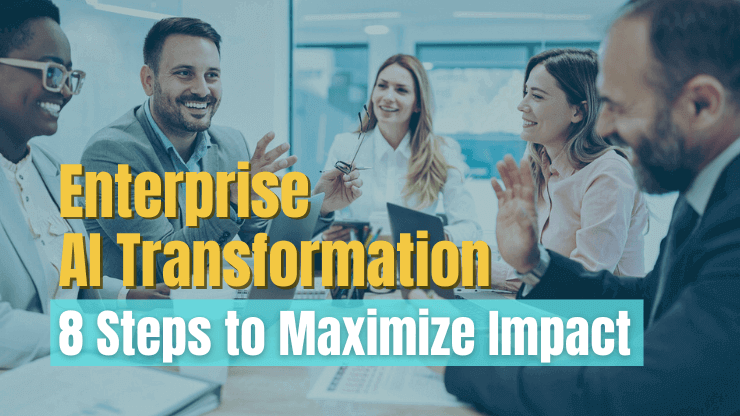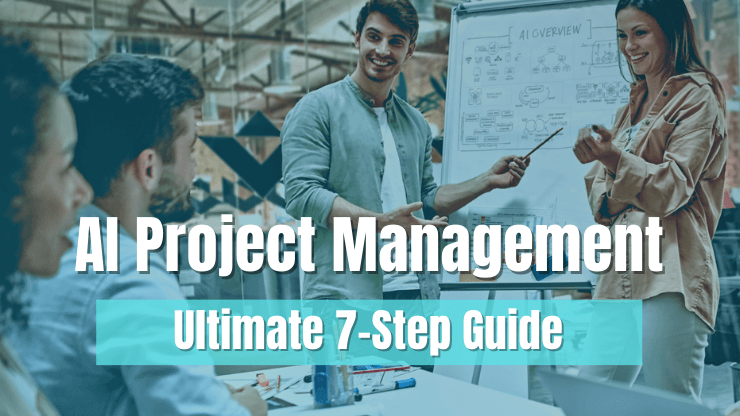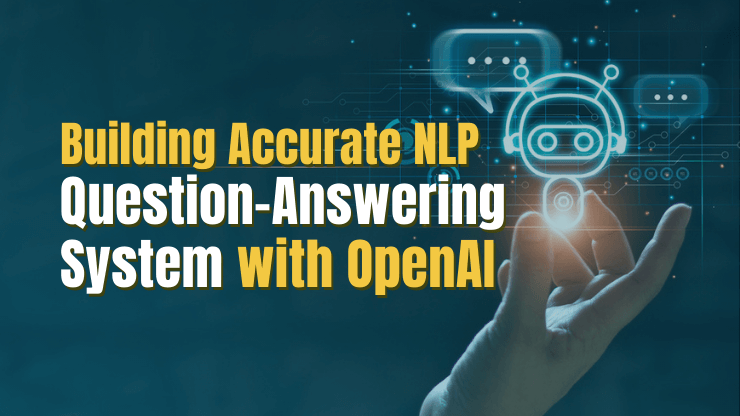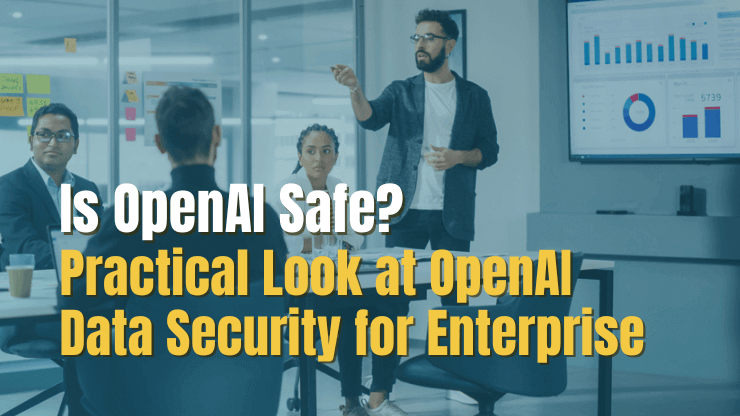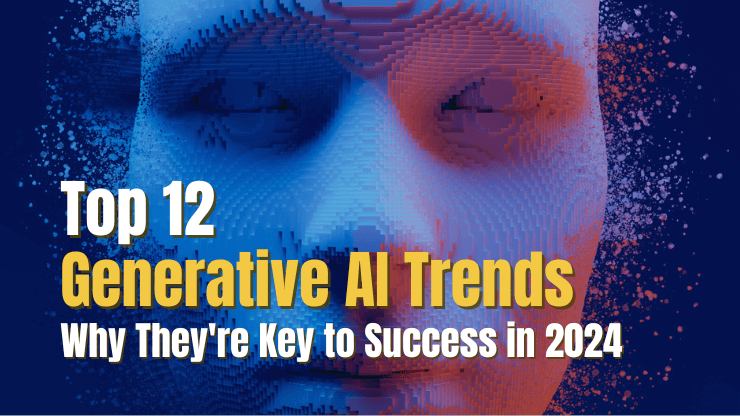AI-powered computer vision and object detection utilize sophisticated machine learning algorithms and vision techniques to revolutionize how businesses analyze and derive insights from image and video data. With the capacity to process large volumes of data in real-time, these tools provide numerous advantages, enhancing image and video analysis, improving efficiency, and propelling businesses towards success.
In this article we’ll share 8 of the best AI object detection and computer vision tools on the market along with some best practices for integrating these tools into your business strategies.By the end of this article, you’ll be ready to begin selecting the right AI-powered computer vision and object detection tool for your business.
Why should businesses consider computer vision & object detection tools?
AI-powered computer vision and object detection tools offer businesses a means to analyze, interpret, and gain valuable insights from visual data at an unprecedented scale. But why exactly should businesses consider these tools? Let’s look at some of the key reasons:
- Improved process automation: AI-powered computer vision and object detection tools can identify, classify, and track objects, automating tasks that were traditionally manual. This streamlines processes, increases efficiency, and reduces the potential for human error that is common with less advanced object detection methods.
- Leveraging underutilized data: Image and video data represent a rich yet frequently untapped source of insights. By integrating AI-powered computer vision and object detection models into their workflows, businesses can capitalize on this data to make more informed decisions, anticipate future trends, and enhance customer experiences.
- Enhanced security and surveillance: These tools can monitor video feeds in real time, enabling immediate object recognition and detection of suspicious activities or safety hazards. This ensures rapid response to potential threats, enhancing security and safety measures.
- Rich customer insights: By analyzing visual data from customers' interactions with products or environments, these tools provide deep insights into customer behavior. These insights can guide businesses in optimizing product design, improving user experience, and tailoring marketing strategies.
Top 8 AI Computer Vision & Object Detection Tools
As the world embraces AI's transformative power, businesses worldwide seek robust, efficient, and scalable tools for object detection tasks. With the plethora of options available, from creating a custom object detector to choosing the right platform can be challenging.
This section aims to simplify your search by unveiling eight of the best AI object detection and computer vision platforms currently on the market. From data labeling and crowdsourcing to full-stack data platforms and specialized tools, we cover a diverse range of solutions that cater to various needs. Let's delve deeper and explore each of these platforms in detail.
Scale AI
What it is: Data platform that helps AI teams improve their models by providing high-quality data labeling and curation services
What you need to know:
- Founded in 2016, it has raised over $600 million in funding and is valued at $7.3 billion as of December 2021
- Works with leading companies and government agencies in various domains, such as automotive, generative AI, natural language processing, computer vision, and more
- Offers a full-stack platform for powering generative AI applications, including fine-tuning, prompt engineering, security, model safety, model evaluation, and enterprise apps
Who it’s for: AI teams that need a data-centric, end-to-end solution to manage the entire ML lifecycle and develop high-quality datasets for their AI applications
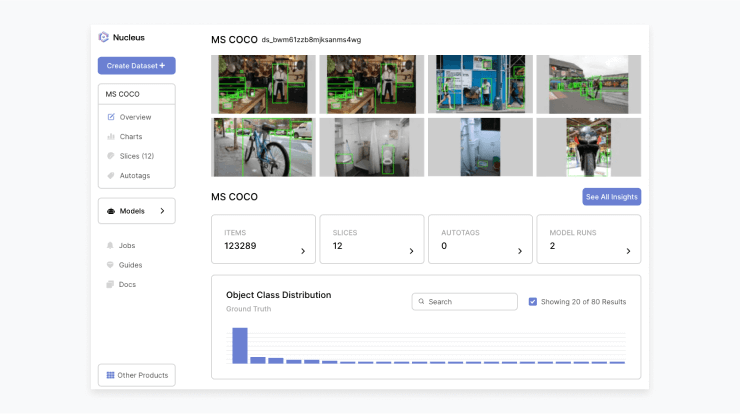
Supervisely
What it is: Unified OS for computer vision that helps companies develop AI faster and better
What you need to:
- Provides a range of labeling tools, automation features and quality assurance mechanisms to create high-quality datasets
- Integrates with many open-source and custom-built tools for deep learning techniques, neural network training, serving, querying, transforming and analyzing
- Allows you to customize your workflow with Supervisely Apps, which are interactive web-apps powered by Python
Who it’s for: Businesses and researchers who need an on-premise, enterprise-grade end-to-end solution for every task in computer vision development
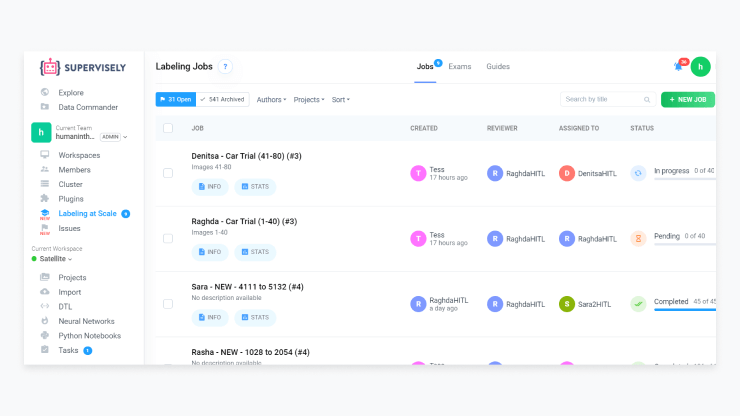
V7 Labs
What it is: AI data platform for computer vision that helps machine learning teams manage their datasets, annotations, and models
What you need to know:
- Offers class-agnostic deep learning neural networks that can create pixel-perfect polygon masks in seconds
- Allows users to customize their workflows by combining more than one object detection model, humans, and data in different stages
- Provides access to 5,000+ professional annotators who can label data on demand with high quality standards
- Supports various object detectors and data formats such as images, videos, 3D point clouds, bounding boxes, keypoints, and more
Who it’s for: Companies that need to build reliable and versatile visual decision-making software driven by deep learning methods and object detection algorithms
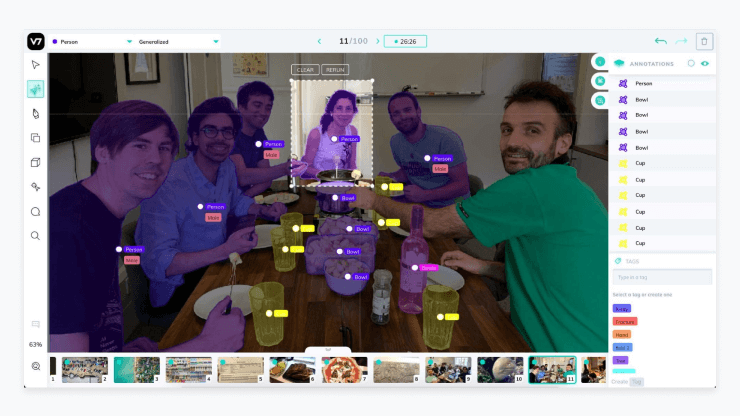
Viso Suite
What it is: Cloud-based object detector and video analysis platform that helps businesses gain insights from their video data
What you need to know:
- Uses artificial intelligence to perform an object detection procedure that automatically detects, classifies and tracks objects and events in videos
- Allows users to create custom dashboards and reports with interactive charts and graphs to visualize their video analytics
- Supports various video formats and sources, such as cameras, drones, mobile devices and online platforms
Who it’s for: Enterprises that need to analyze large volumes of video data for security, marketing, research or operational purposes
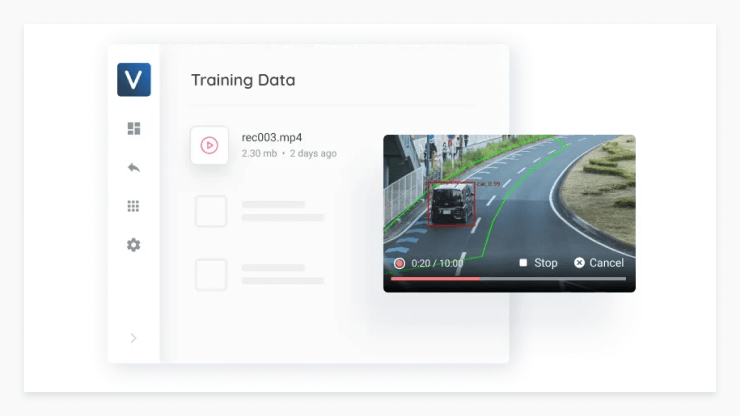
Labelbox
What it is: Data labeling platform that helps businesses create high-quality training data for their machine learning models
What you need to know:
- Supports various types of annotations, such as image segmentation, text classification, video object tracking, and other computer vision tasks
- Allows users to customize their workflows, integrate with their own data sources and tools, and manage their teams and projects
- Leverages deep learning models and human-in-the-loop techniques to improve the efficiency and accuracy of data labeling
- Provides analytics and insights to monitor the quality and progress of data labeling
Who it’s for: Businesses that need a scalable and flexible solution for creating large-scale and complex training data sets for various machine learning applications
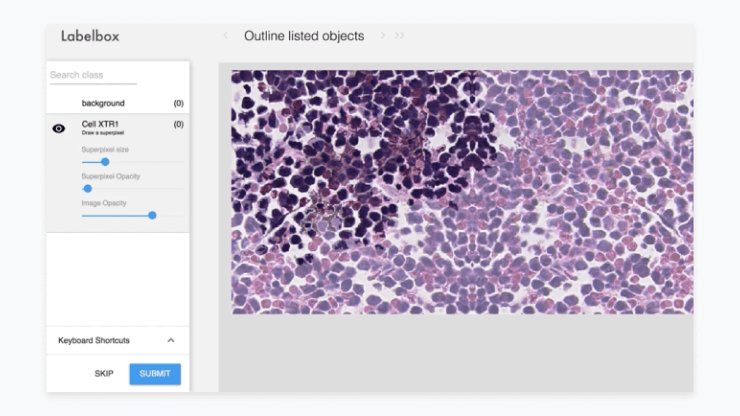
Toloka
What it is: Crowdsourcing platform that allows you to process large amounts of visual data by distributing tasks to a large number of people who do small tasks
What you need to know:
- Has tools available for efficient data annotation, image classification, object detection and recognition, and instance segmentation
- Has a network of over 10 million freelancers and independent contractors, known as Tolokers, who can complete a variety of tasks to further develop, fine-tune, and evaluate LLMs
- You can use Toloka’s quality control tools to ensure the accuracy and reliability of the data you receive
Who it’s for: Businesses or teams that want to combine the power of AI and human review to label their video and image data
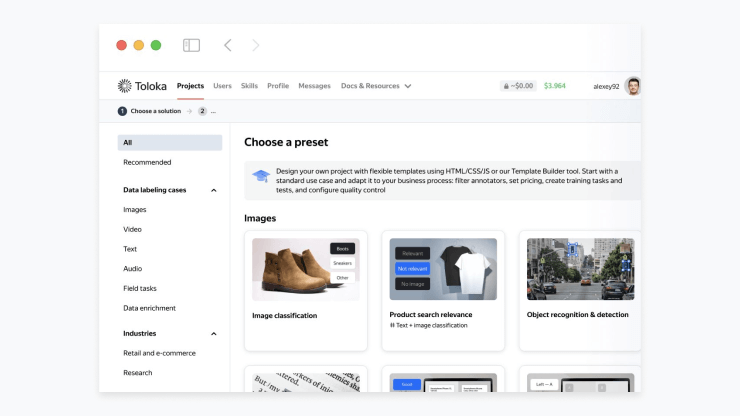
Superannotate
What it is: Platform that helps you create and manage high-quality training data for your artificial intelligence and machine learning projects
What you need to know:
- Allows you to annotate different types of data, such as images, videos, text, LiDAR, audio, and more, using advanced tools and automation features
- Can also access a global marketplace of professional annotation teams that can help you with your data labeling needs
- Provides data management, quality control, and MLOps tools to enhance your model performance and streamline your workflow
- Used by various industries and use cases, such as autonomous driving, robotics, healthcare, security, and more
Who it’s for: Teams that want to create and manage high-quality training data for their AI projects and want the flexibility to access a global marketplace of professional annotation teams
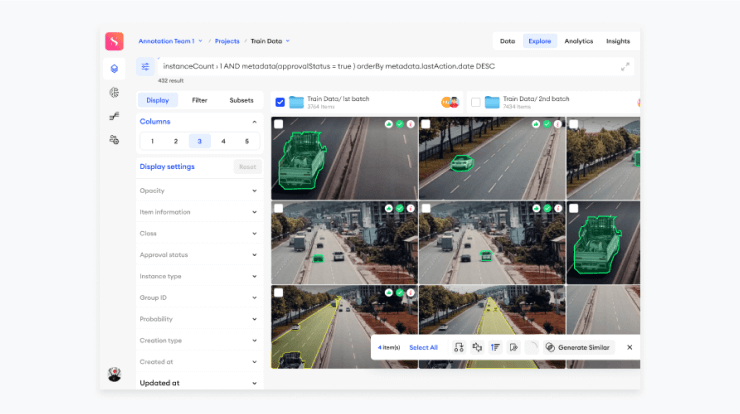
OpenCV
What it is: Open source computer vision and machine learning software library to support real-time computer vision applications.
What you need to know:
- Open source and cross-platform, supporting C++, Python, Java, and other languages on Linux, Windows, MacOS, iOS, and Android
- Highly optimized for real-time applications and can leverage hardware acceleration and parallel processing
- Has a large and active community of developers and users, with over 50K people contributing to the project on GitHub
- OpenCV AI Kit provides a series of hardware modules and additions to the OpenCV library that support spatial AI
- OpenCV Face Recognition combines the OpenCV library with top-rated face recognition technology
Who it’s for: Developers and researchers who want to build applications in the areas of facial recognition, augmented reality, object detection, and more
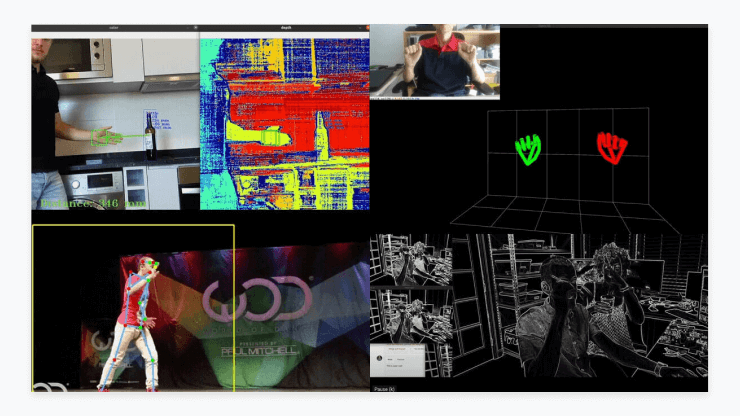
What industries can benefit from AI object detection tools?
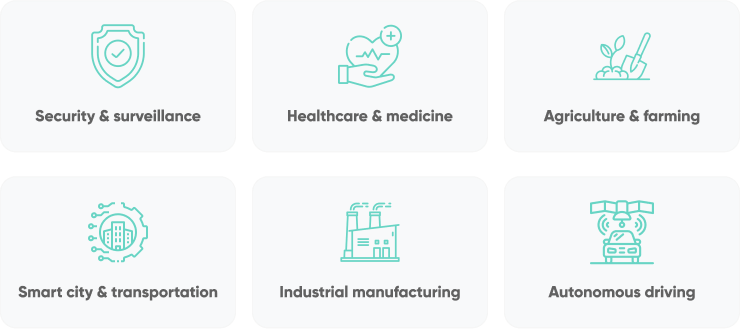
Armed with a deep understanding of what AI computer vision and object detection tools are and a list of the leading platforms on the market, it becomes clear how these technologies can offer businesses who want to be at the forefront of object detection technology.
Let's look deeper at real-world applications across various industries, showcasing the transformative power and versatility of these AI tools:
- Security and surveillance: Implementing computer vision and object detection technologies enhances the efficacy of security systems. These tools can help monitor premises, detect unauthorized activity, track movements, thereby preventing theft or vandalism more efficiently than traditional security methods.
- Healthcare and medicine: These tools can play a critical role in diagnosing diseases by analyzing medical images, monitoring patients' conditions, or even assisting surgeons during intricate procedures, leading to improved patient outcomes and streamlined healthcare processes.
- Agriculture and farming: Farmers and agribusinesses can leverage these AI tools to boost crop yield through optimized farming practices, early detection of pests and diseases, efficient livestock monitoring, and automated harvesting, revolutionizing traditional farming methodologies.
- Smart city and transportation: City administrations and transport authorities can harness computer vision and object detection to improve traffic management, reduce congestion, enhance road safety, and manage parking facilities effectively, leading to more sustainable and liveable urban spaces.
- Industrial manufacturing and automation: In the realm of manufacturing, these tools facilitate the inspection of products, detection of defects, quality control, and production optimization, contributing to cost-efficient and error-free production lines.
- Automotive and Autonomous Driving: Computer vision and object detection tools lie at the heart of the evolving autonomous vehicle technology, enabling pedestrian detection, collision avoidance, and improved navigation.
What are some best practices for implementing AI computer vision and object detection tools?

AI computer vision and object detection tools are widely used in various domains and industries, such as healthcare, security, retail, manufacturing, and agriculture. However, different applications may have different requirements and challenges for implementing these tools. Therefore, it is important to follow some best practices and standards to ensure the quality, reliability, and ethics of AI computer vision and object detection solutions. Some of these best practices and standards are:
Clearly define objectives
Before purchasing AI-powered computer vision and object detection tools, it's crucial to clearly define your objectives. Identify the specific business needs and goals you aim to address with these technologies. For example, you might want to enhance quality control processes, improve security surveillance, or streamline inventory management. By having well-defined objectives, you can ensure that the tools you choose align with your desired outcomes.
Assess accuracy, scalability, and customization
Accuracy is a critical factor when evaluating computer vision and object detection tools. Look for state of the art vendors that provide information on the accuracy and performance metrics of their models. Precision, recall, and F1 score are common metrics to consider. Scalability is another crucial aspect, as your data volumes and processing requirements may grow over time. Ensure that the tools can handle increasing data volumes and maintain performance. Additionally, assess customization options. Determine if you can fine-tune pre-trained models or train new models from scratch to adapt them to your specific use cases.
Consider data quality and privacy
The quality and availability of data are crucial for training AI models effectively. Assess the data requirements of the computer vision and object detection tools you're considering. Ensure you have access to a diverse and representative dataset that aligns with your use cases. Additionally, consider how the vendor handles data privacy and security. Ensure that their data handling practices comply with relevant regulations and that appropriate measures are in place to protect sensitive information. Privacy is of utmost importance, especially when dealing with visual data.
Label the object, not the context
When using a boundinging boxes, they should contain the object of interest rather than the environment surrounding it. For example, if you are trying to identify dogs in an image, the bounding box should be drawn around the dog, not the entire scene where the dog is located.If you are using an object detection API, you may be able to adjust the bounding box settings to best meet your needs.
Conclusion
AI-powered computer vision and object detection tools have become indispensable for businesses across a variety of industries who are looking to unlock valuable insights from their video data, optimize processes, and generally stay at the forefront of technological advancements. Many businesses choose to work with an off-the-shelf solution, however, if your needs extend beyond what can be provided out of the box, consider our AI development services.
Our team can help you put together a comprehensive AI strategy and guide you through the development process. With our software development consulting services, you can leverage the power of AI to build a custom solution to perform object detection to your exact specifications..

![8 Best AI Computer Vision & Object Detection Tools [2023 Review]](/.netlify/images?url=_astro%2Fai-computer-vision-tools.C5GXEyFN.png)
